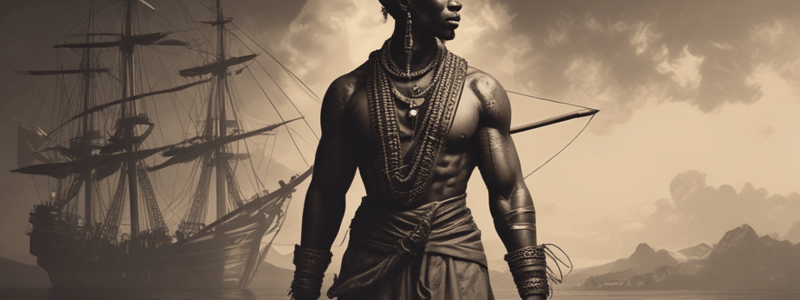Podcast
Questions and Answers
What was the primary reason for limiting the size of an enslaved person's provision ground?
What was the primary reason for limiting the size of an enslaved person's provision ground?
- To prevent them from becoming self-reliant (correct)
- To reduce the amount of food produced on the plantation
- To encourage them to work on the plantation
- To increase the workload of the enslaved person
What was the purpose of enacting laws that restricted the movement of enslaved people on the islands?
What was the purpose of enacting laws that restricted the movement of enslaved people on the islands?
- To encourage relationships between enslaved people from different plantations
- To prevent them from planning revolts and events (correct)
- To allow them to travel freely
- To increase their productivity
Prior to 1823, what was allowed by planters in terms of family relationships?
Prior to 1823, what was allowed by planters in terms of family relationships?
- Allowing enslaved people to form their own families
- Encouraging family reunions
- Preventing family relationships
- Separating family members at any time (correct)
What was the effect of cultural measures such as forcing enslaved Africans to celebrate western holidays?
What was the effect of cultural measures such as forcing enslaved Africans to celebrate western holidays?
What was the purpose of placing enslaved people in stocks?
What was the purpose of placing enslaved people in stocks?
Why were laws enacted to prevent Africans from planting staple crops of cotton or sugar cane?
Why were laws enacted to prevent Africans from planting staple crops of cotton or sugar cane?
What was the purpose of prohibiting relationships between enslaved people from one plantation to another?
What was the purpose of prohibiting relationships between enslaved people from one plantation to another?
What was the effect of curfew laws on the enslaved people?
What was the effect of curfew laws on the enslaved people?
Flashcards are hidden until you start studying
Study Notes
Economic Control
- Enslaved Africans were not allowed to own property without their master's consent
- Provision grounds were limited in size to prevent enslaved individuals from making a profit or becoming self-reliant
- Laws prohibited enslaved Africans from planting staple crops like cotton or sugar cane
Physical Control
- Physical measures used to control enslaved individuals included:
- Stocks (a wooden frame to restrict movement)
- Severe beating
- Cutting off limbs
- Killing
- Laws restricted the movement of enslaved people on the islands, prohibiting them from leaving the plantation without permission
- Relationships between enslaved people from different plantations were forbidden
- Curfews were enacted to manage the movement and assembly of enslaved individuals
- Family life was not encouraged, as planters could sell their property and separate families at any time (until 1823)
Social Control
- Cultural measures used to control enslaved Africans included:
- Forcing celebration of Western holidays
- Prohibiting African forms of communication, such as blowing horns or beating drums
- Prohibiting African Spiritualism and Islam practices
Studying That Suits You
Use AI to generate personalized quizzes and flashcards to suit your learning preferences.



